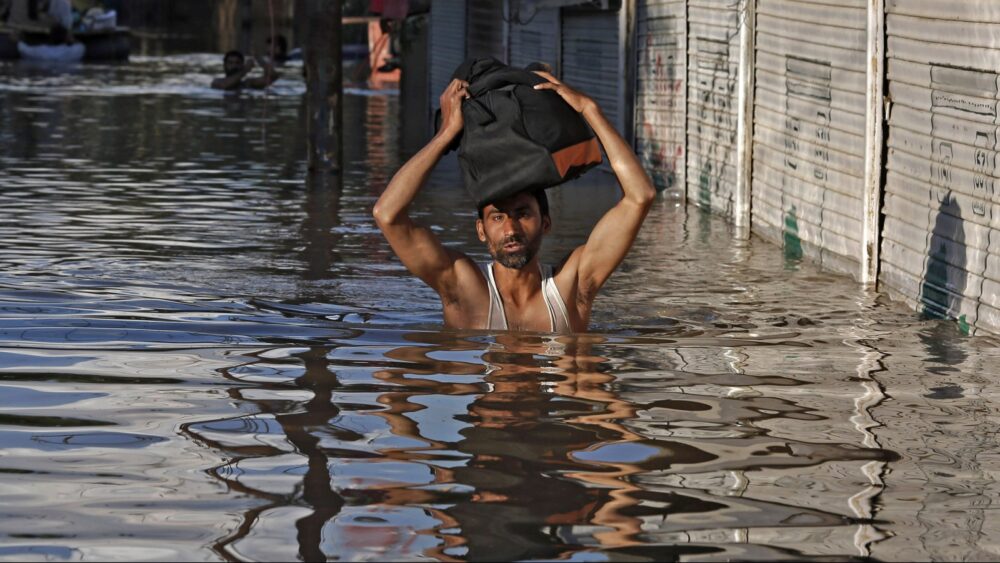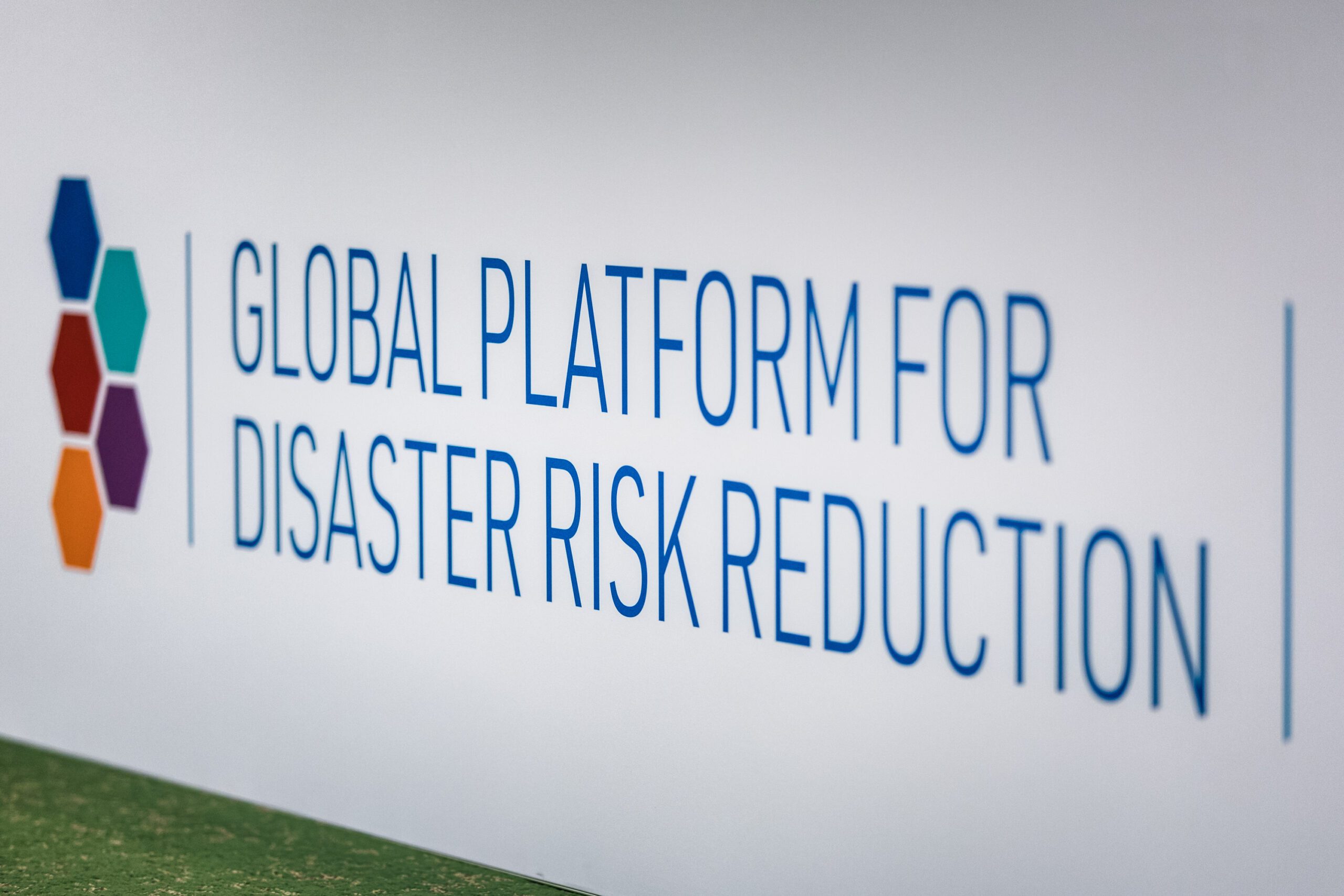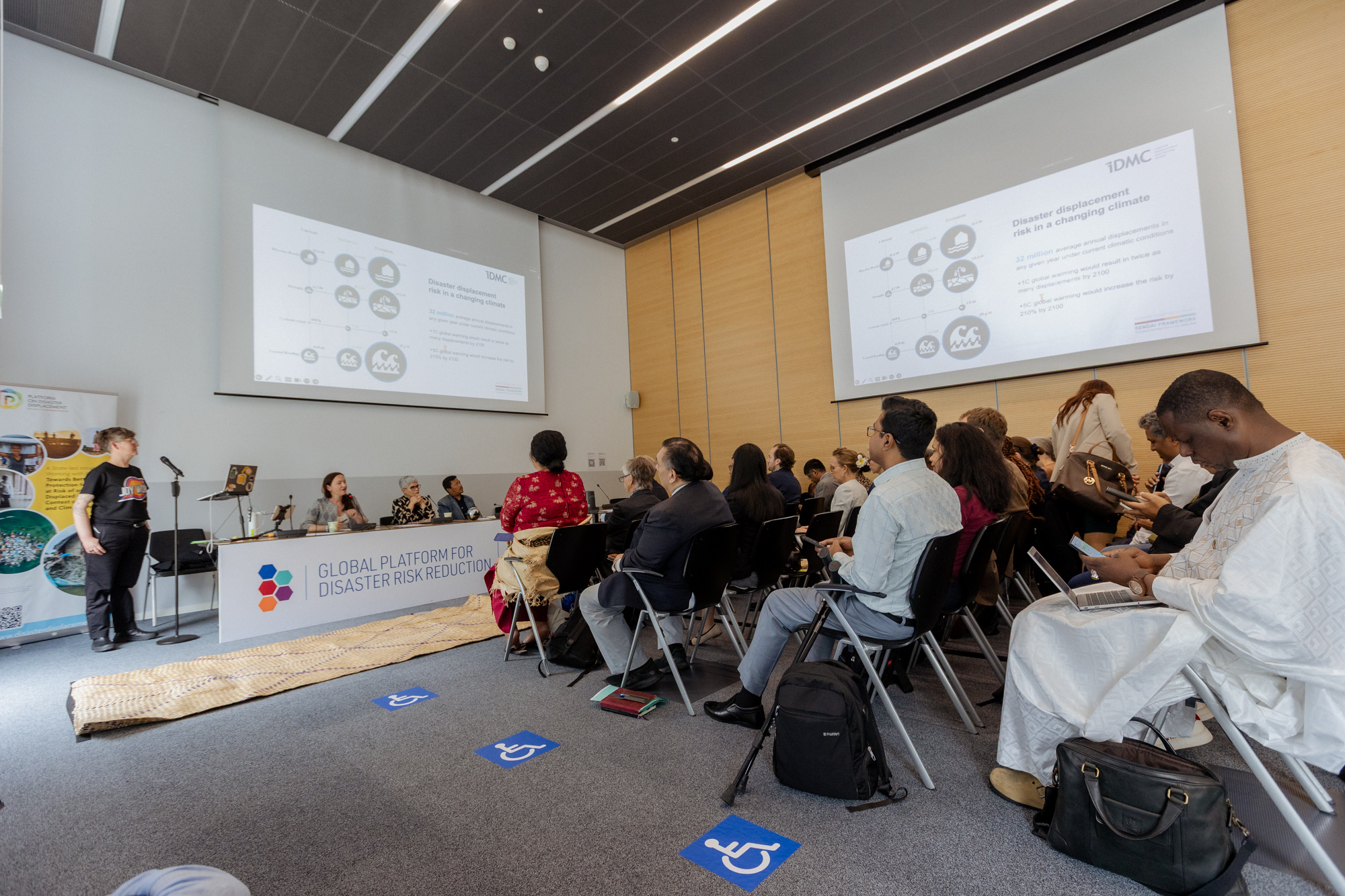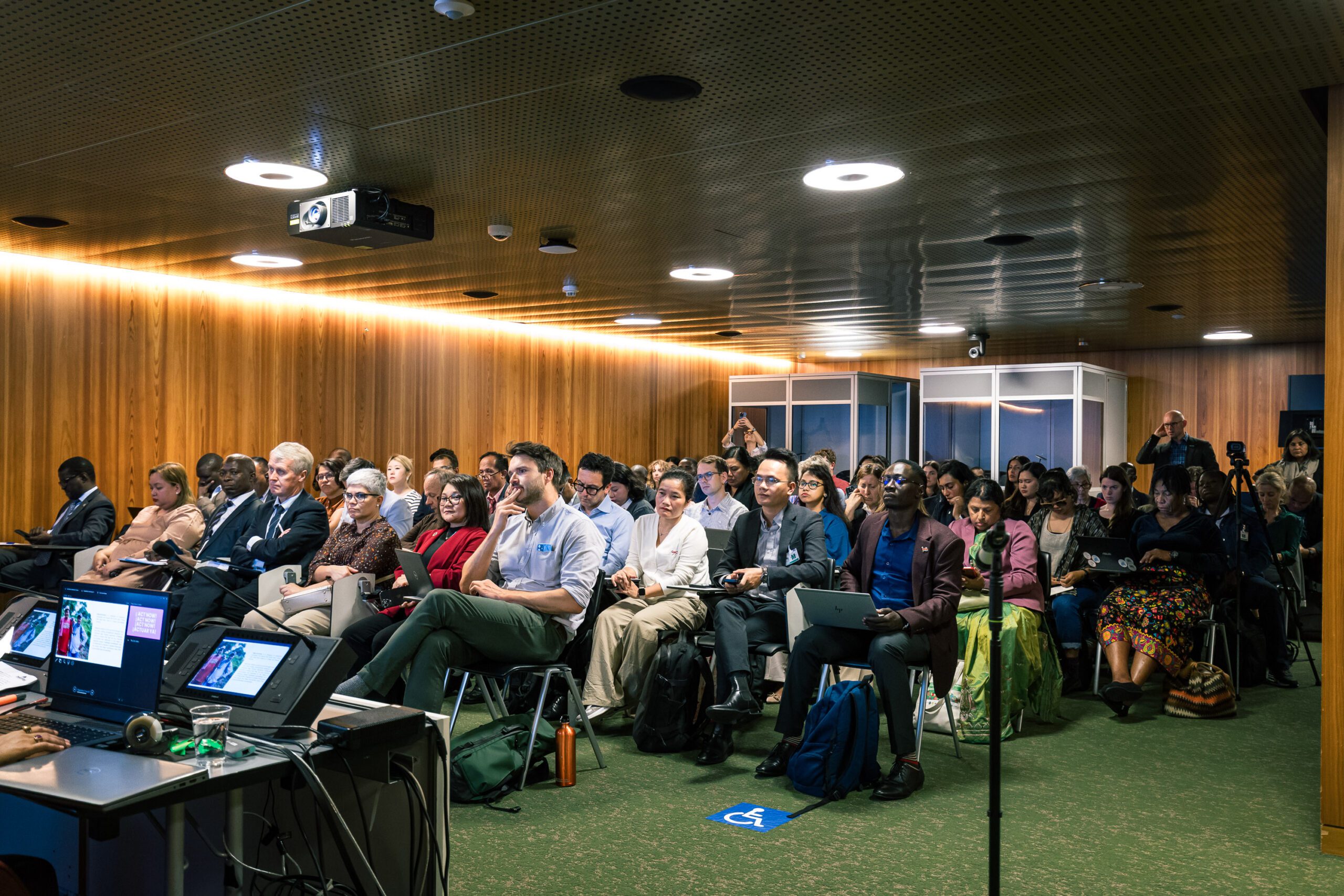Event | Internal Displacement in the Context of Disasters and the Adverse Effects of Climate Change: Prevention, Protection and Solutions

GP20 Steering Group Meeting
Monday 9 March 2020, 15:00-17:30
Palais des Nations, Room XXVII, Geneva
Internal Displacement in the Context of Disasters and the Adverse Effects of Climate Change: Prevention, Protection and Solutions
Background
Every year, millions of people are forced to leave their homes as a result of disasters linked to natural hazards such as floods, earthquakes, cyclones and droughts. Since 2008, an average of 24 million new displacements have taken place each year as a result of sudden-onset disaster events, a majority of which are weather-and climate-related[1]. This number is likely much higher when accounting for people compelled to move from their place of origin in the context of slow-onset events and processes linked to the adverse effects of climate change and environmental degradation.
Scientists warn that displacement in the context of the adverse effects of climate change will increase as extreme weather events become more frequent and intense, sea levels rise and many countries start to experience the limits of their adaptation and disaster risk reduction action and measures.[2] Looking towards the future, the World Bank projects that in three regions alone (Sub-Saharan Africa, South Asia and Latin America), without additional and urgent climate and development action, more than 143 million people could be forced to move by 2050 to escape the slow-onset impacts of climate change[3].
Most disaster displacement takes place within countries. People displaced in the context of disasters and the adverse effects of climate change often have similar protection and assistance needs as those that flee conflict and violence. During disasters, pre-existing vulnerabilities are often exacerbated and specific protection needs increase. Such needs are also linked to the type of natural hazard (sudden-onset vs slow-onset) and the involuntary nature of the movement. People compelled to move, both in the context of sudden and slow-onset disasters and the adverse effects of climate change, may not be able to return to their homes or places of habitual residence, and be in need of relocation or settlement elsewhere.
Disaster displacement risk can be prevented or reduced through policies and action that influence the exposure and vulnerability of people, infrastructure and assets to natural hazards. The predictable, cyclical or slow-onset nature of some natural hazards creates important opportunities to avoid or mitigate the impacts of displacement through increased investment in disaster risk reduction, urban and land use planning, climate change adaptation and risk-informed development planning at the national and local level. Disasters are not ‘natural’, they are mostly generated by social, political, demographic and environmental factors.
Protecting the displaced and achieving durable solutions to displacement in the context of disasters and the adverse effects of climate change requires sustained cross-sectoral partnerships, coordinated action long before disaster strikes and integrated approaches. Ensuring displaced people or those at risk of displacement actively participate in planning and decision-making on matters related to resilience-building, disaster preparedness, mitigation and response across policy areas are key.
Relevant International and National Frameworks
The Guiding Principles on Internal Displacement and the African Union’s 2009 Convention for the Protection and Assistance of Internally Displaced Persons in Africa (Kampala Convention) explicitly recognize the protection and assistance needs of internally displaced persons in disaster contexts. Disaster displacement has also been addressed in regional strategies, such as the 2017-2030 Framework for Resilient Development in the Pacific: An Integrated Approach to Address Climate Change and Disaster Risk Management.[4]
At the national level, a number of legal and policy frameworks and ongoing processes are also relevant to the protection of persons displaced in disaster and climate change contexts.[5] States have also committed to addressing the drivers and impacts of disaster displacement. This includes the adoption of the UN Framework Convention on Climate Change (UNFCCC), the Sendai Framework for Disaster Risk Reduction 2015 – 2030[6], the 2030 Agenda for Sustainable Development, the 2016 Agenda for Humanity, the Global Compact for Safe, Orderly and Regular Migration (GCM) and the Global Compact on Refugees (GCR).
The Parties to the UNFCCC mandated the Executive Committee of the Warsaw International Mechanism for Loss and Damage Associated with Climate Change Impacts (WIM) to establish a Task Force on Displacement, which has developed recommendations on integrated approaches to avert, minimize and address displacement related to the adverse impact of climate change. The recommendations were welcomed by the Parties to the UNFCCC at its 24th Conference in December 2018.[7]
Objectives
This meeting is co-organized by the GP20 initiative on internal displacement and the Platform on Disaster Displacement (PDD).[8] The GP20 initiative seeks to facilitate the sharing of experiences and lessons learned on internal displacement as well as promote strategic action to prevent, address and resolve internal displacement. The Platform on Disaster Displacement is a group of States working together with partners towards better protection for disaster displaced persons.
The objective of GP20 Steering Group meetings is to showcase and learn from government efforts to prevent, address and resolve internal displacement. Government representatives share practices and lessons learned to stimulate an interactive exchange with other GP20 stakeholders, which include UN agencies, NGOs, the Red Cross and Red Crescent Movement and the World Bank.
The objectives of this GP20 Steering Group meeting organized together with PDD are:
- To share concrete examples of effective practices on how to prevent, address and resolve displacement in the context of disasters and the adverse effects of climate change and strengthen the resilience of the displaced and host communities;
- To discuss the relevance and importance of IDP participation, data collection and analysis, laws and policies on internal displacement and durable solutions in disaster displacement contexts;
- To discuss key challenges to and gaps in current responses and identify opportunities to strengthen and expand actions that prevent and address disaster displacement; and,
- To formulate new ideas and recommendations that can inform the deliberations of the High-Level Panel on Internal Displacement[9].
[1] IDMC Disaster Displacement: A Global Review 2008-2018, https://www.internal-displacement.org/sites/default/files/publications/documents/201905-disaster-displacement-global-review-2008-2018.pdf
[2] Statement by IPCC Chair Hoesung Lee, Opening of COP 25, 2 December 2019, https://www.ipcc.ch/site/assets/uploads/2019/12/IPCC-Chair-opening-COP25.pdf
[3]https://openknowledge.worldbank.org/bitstream/handle/10986/29461/WBG_ClimateChange_Final.pdf
[4] https://www.forumsec.org/wp-content/uploads/2018/06/Framework-for-Resilient-Development-in-the-Pacific-2016.pdf
[5] See for example Vanuatu’s National Policy on Climate Change and disaster induced displacement, Fiji’s Displacement Guidelines amongst others
[6] Sendai Framework for Disaster Risk Reduction 2015-2030, available at: https://www.unisdr.org/files/43291_sendaiframeworkfordrren.pdf. In particular: Target B to substantially reduce the number of affected people globally by 2030 aiming to lower the average global figure per 100’000 between 2020-2030 and Target E calling on States to develop national disaster risk reduction strategies that incorporate considerations of disaster displacement and the challenges of human mobility.
[7] https://unfccc.int/wim-excom/sub-groups/TFD
[8] The Platform on Disaster Displacement (PDD) was established on 1 July 2016 to follow up on the work started by the Nansen Initiative and to implement the recommendations of the Nansen Initiative Protection Agenda. The overall objective of the PDD 2019-2022 is to “To support States and other stakeholders to strengthen the protection of persons displaced across borders in the context of disasters and the adverse effects of climate change, and to prevent or reduce disaster displacement risks in countries of origin”. Please see www.disasterdisplacement.org
[9] The High-Level Panel on Internal Displacement has been established by the UN Secretary-General to focus on addressing protracted displacement and achieving durable solutions for internal displacement situations. The Terms of Reference of the Panel indicate climate change adaptation, disaster risk reduction, and peace action as areas of collaboration to be addressed by the recommendations of the Panel. Please see https://www.un.org/sg/en/content/sg/statement/2019-10-23/secretary-generals-statement-announcing-the-establishment-of-high-level-panel-internal-displacement and https://www.un.org/sg/en/content/sg/personnel-appointments/2019-12-03/high-level-panel-internal-displacement
Useful tools
Learn more about GP20
Download the Concept Note for the meeting:
 Loading...
Loading...
Download the Agenda for the meeting:
 Loading...
Loading...
Learn more about PDD engagement with GP20 in our Workplan 2019-2022:
